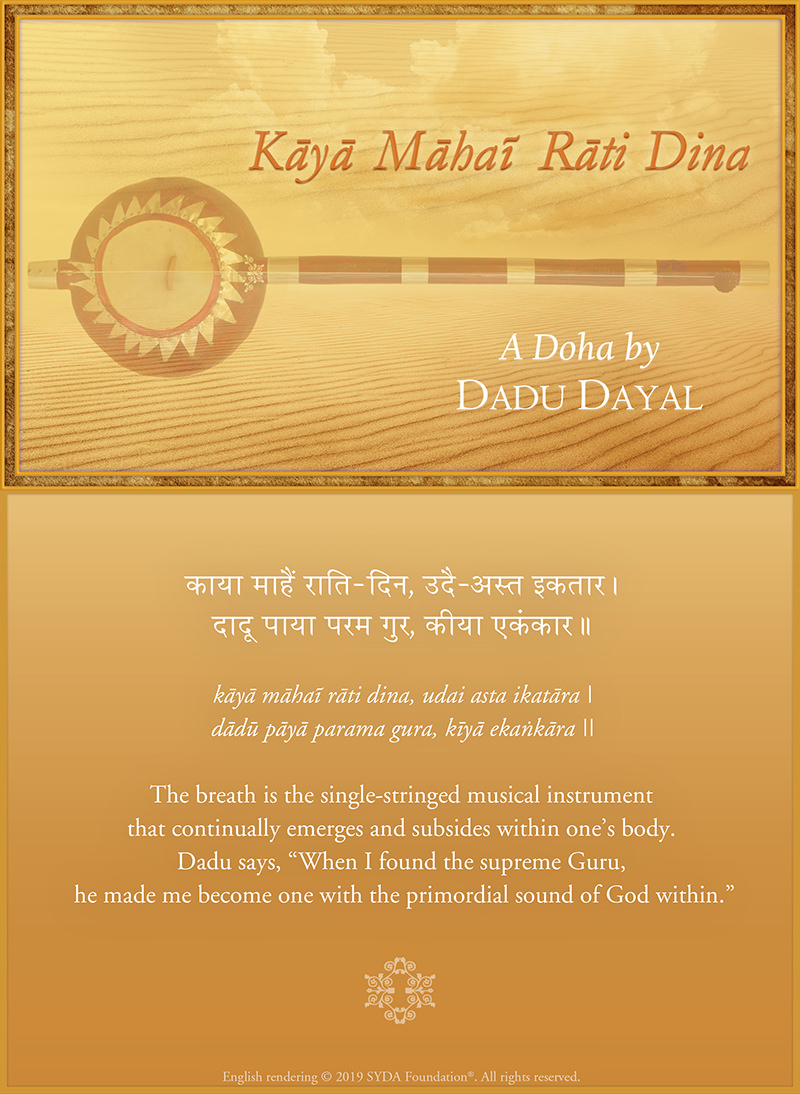Kaya Mahai Rati Din
A Doha by Saint Dadu Dayal
In his doha titled Kaya Mahai Rati Din, the poet-saint Dadu Dayal succinctly and beautifully reflects on So’ham, the natural mantra of the breath. He shares how he attained union with this divine sound through the grace of the Guru.
Saint Dadu Dayal, who lived in the Indian state of Gujarat in the sixteenth century, depicts the breath as a “one-stringed instrument.” His description in this doha evokes the sustained playing of one foundation note, which is central to the Indian musical tradition. This sustained note is a constant reference from which all musical notes arise and into which they merge—and serves here as a metaphor for the sound of the breath, which goes on continuously beneath the diverse fluctuations of the mind and senses.
Read more
Though the breath is innate and ever-present, Saint Dadu Dayal emphasizes that only by finding the supreme Guru did he become “one with the primordial sound.” We can understand from these words that it is the Guru’s teachings and grace that allow us to experience and recognize the spontaneous repetition of So’ham, the mantra of our identity with the Self of all.
In her talk on the Message for 2019, Gurumayi presents the mantra So’ham as a powerful means to lead the mind into meditation. As you prepare to meditate on the mantra So’ham, remember that you are putting Gurumayi’s Message into practice. Set aside a few minutes to connect with your love and gratitude for the Guru’s presence and teachings in your life. By doing so, and repeatedly following her instructions for the practice of So’ham, you will be attuning your effort with her supreme grace, which stills the mind and empowers it to perceive the mantra within the breath.



